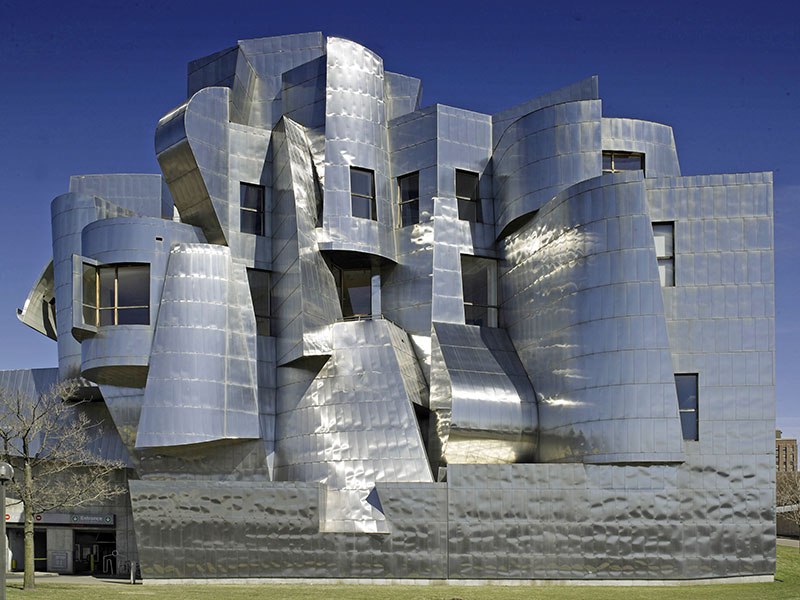This city of glamour, innovation, and cultural diversity is also known to host a great variety of famous buildings, all of which contribute to the unique urban landscape that is Los Angeles. Such structures, from historic monuments to modern marvels in architecture, define the skyline of this city while taking prominent positions in its cultural and social identity. The paper will therefore focus on some of the most famous buildings in L.A. to show their architectural significance and historical importance, as well as how they impacted the identity of the city.
-
Griffith Observatory
Location: Griffith Park
Architect: John C. Austin
Completion: 1935
The Griffith Observatory is perched on the top of Mount Hollywood in Griffith Park and features one of the most iconic viewpoints over the city of Los Angeles. Constructed by architect John C. Austin in the Art Deco style, it was opened in 1935 and has since stood for scientific exploration and open education to the public. Its hyperbolic dome and terraced gardens create a sweeping panorama of the city and the Hollywood Sign, a spot popular with locals and visitors alike.
Inside, it has various exhibitions on astronomy and space science and provides public telescopes for the examination of the night sky. The role that the Griffith Observatory plays in popularizing science and the beauty of its location have made this institution very dear to the citizens of Los Angeles as a prime element of their cultural and educational infrastructure.
-
The Getty Center
Location: Brentwood
Architect: Richard Meier
Completion: 1997
The Getty Center is a Brentwood building masterpiece, designed by Richard Meier, completed in 1997. Sleekly white, expansive gardens, and stunning city views give this Getty Center its minimalist texture and offer a striking contrast in the surrounding landscape. It is occupied by the Getty Museum’s large collection of European paintings, sculptures, and decorative arts, together with the Getty Research Institute and the Getty Conservation Institute.
The transparency and openness are further enhanced by the glass walls and airy spaces of this center, adding to the experience for the visitor. The architectural elegance of the Getty Center and its preeminence as a large cultural institution make it truly one of Los Angeles’ landmarks and a definite must-see for lovers of art and architecture alike.
-
Walt Disney Concert Hall
Location: Downtown Los Angeles
Architect: Frank Gehry
Year: 2003
The Walt Disney Concert Hall, designed by one of the most famous architects of our time, Frank Gehry, is one of the most striking examples of contemporary architecture in Downtown Los Angeles. Completed in 2003 with an undulating stainless steel façade and an innovative design, the concert hall expresses the dynamic forms and reflective surfaces, giving it a dramatic and fluid presence that captures the essence of music and movement.
The Walt Disney Concert Hall is internationally recognized for its acoustics and interior design. This will enhance the experience of the music, as well as raise the status of Los Angeles as a hub of architectural innovation and cultural excellence.
-
Los Angeles County Museum of Art (LACMA)
Location: Miracle Mile
Architect: William Pereira Renzo Piano, and others
Year: Various phases with the first building completed in 1965
The Los Angeles County Museum of Art is the largest art museum in the western United States and among the larger cultural institutions in Los Angeles. The campus of the museum comprises some buildings, each of which has contributed to its peculiar architectural identity. Notable among these are the William Pereira Pavilion for Japanese Art, Renzo Piano’s Resnick Pavilion, and the Broad Contemporary Art Museum by Richard Meier.
The eclectic architecture of the LACMA has spanned many styles, with the institution shifting in its role as an artistic and cultural center. Its collection ranges from ancient artifacts to contemporary works and provides a central location for engagement with art, as well as being a noted feature of Los Angeles’ cultural landscape.
-
Bradbury Building
Location: Downtown Los Angeles
Architect: George Wyman
Completion: 1893
The Bradbury Building, completed in 1893 by architect George Wyman, was an architectural treasure from bygone days in Downtown Los Angeles. The building, famous for its ornate Victorian style and gorgeous interior atrium, has often been cited as the prime example of early Los Angeles architecture. Its wrought-iron balconies, sweeping marble staircases, and intricate tile work all combine to dramatic and elegant effect.
The Bradbury Building has been used for many films, notably the classic noir movie “Blade Runner,” which further stamps its status as a cultural and architectural icon. Its historical nature and design make it one of the well-cherished landmarks of the city.
-
Staples Center
Location: Downtown Los Angeles
Architect: AECOM
Completion: 1999
Completed in 1999, Staples Center was designed by AECOM, an architectural firm, and is a major sports and entertainment arena in Downtown Los Angeles. It features events home to the Los Angeles Lakers and Los Angeles Clippers NBA teams and the Los Angeles Kings NHL team, which has become a main focal point for tremendous athletic and entertainment events.
Its building design incorporates a unique rounded shape complemented with a modern facade that makes it even more prominent in the city’s skyline. The Staples Center has hosted many concerts, award shows, and other high-profile events that no doubt made it one of the significant theaters in the Los Angeles entertainment scene.
-
Los Angeles City Hall
Location: Downtown Los Angeles
Architect: John C. Austin and Albert C. Martin
Completion: 1928
Completed in 1928 by the architectural firm John C. Austin and Albert C. Martin, the Los Angeles City Hall has become the quintessential iconic symbol for the city’s governance and history. It is an outstanding piece of Art Deco design and a dominant presence over Downtown Los Angeles. At 454 feet, City Hall was the tallest building in Los Angeles until the late 20th century.
The panoramic views of the city and its environs are clearly seen from the building’s observation deck, which has become a point of interest among tourists. Being a seat of the Los Angeles city government, City Hall is generally at the center of the administration and functioning of the city.
Hollywood Sign
Location: Hollywood Hills
Architect: Harry Chandler and others
Completion: 1923
Though not literally a building, the Hollywood Sign is one of Los Angeles’s most recognizable and iconic landmarks. Originally erected in 1923 as an advertisement for a real estate development, the sign has become a global symbol of the film and television industry. The letters, standing at a height of 45 feet, are located on Mount Lee in the Hollywood Hills and visible from several vantage points around the city.
With its cultural significance and picture-perfect location, the Sign has been a landmark of utmost popularity. It is symbolic of the heritage of Los Angeles “as the entertainment capital of the world;” thus it is one of the city’s significant attractions, which attracts visitors from every corner of the globe.
Conclusion
Los Angeles is a city of varied and iconic architecture. From the historic magnificence of the Bradbury Building to the ultra-modern glamour of the Getty Center and Walt Disney Concert Hall, these famous buildings not only define the profile of the city but also act like looking glasses reflecting rich, eclectic cultural and architectural legacies. Each building carries a unique tale about the evolution of Los Angeles and adds character to its identity as a metropolis in the world arena. Its buildings shall then become testimonials to their dynamic history and creative spirit in the constant evolution of the city for times to come.







